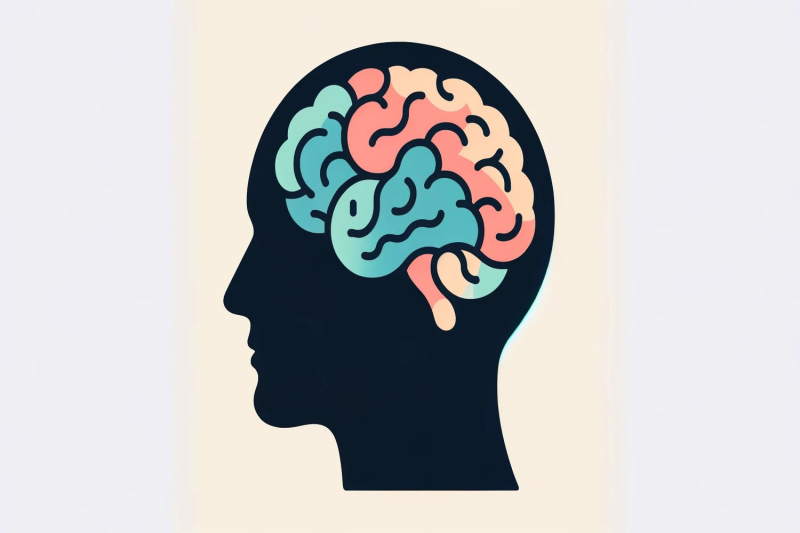
© Image generated by DALL-E AI for Presse-Citron
This study, published March 25 in the journal JAMA Neurology and led by Charles DeCarli of the University of California, highlights a rather astonishing fact: the size of our brain has continued to increase in recent decades. This evolution is noted by an average increase of 6.6% in the total volume of our organ as well as an increase of 15% in cortical surface (external surface of the brain). These values are true for individuals born in the 1970s compared to those in the 1930s.
This increase could have quite profound positive implications on our cognitive healthin the future. This is perhaps good news when we know the impacts of an overabundance of technology on our brains.
Always bigger& nbsp;!
The study was based on the analysis of data extracted from l& ;#8217;MRI of 3 226 participants of the Framingham Heart Study, a community research project launched in 1948. The observation is clear: generations succeed one another and simultaneously, our brains grow. The results prove a fairly clear increase in intracranial volume as well as cortical surface area in individuals born more recently.
For researchers, this phenomenon is due to several factors, further confirming that Charles Darwin was right when he developed his theory of evolution. Our environment and our way of life (education, culture, health conditions) influence our brain development. These effects are, moreover, cumulative, and manifest physically in shaping the structure of our brain.
Implications for brain health
Concretely, does this change anything for us? Well yes. The implication of such a discovery is twofold. First, it proves that factors other than those belonging to genetics are at least as important for properly studying the human brain. Environmental and social factors weigh just as much in the balance.
Secondly, it opens up completely new avenues of research which would focus on how and why these external factors would have such an important influence on the size of our organ. For long-term brain health and the study of neurodegenerative diseases, this increase has consequences.
< p>To better understand the implications on diseases, we must understand the concept of brain reserve, central in the study of neurodegenerative pathologies, in particular Alzheimer's disease. Concretely, cerebral reserve refers to the capacity of the brain to tolerate neuronal pathologies without manifesting clinical symptoms. In other words, a larger brain has greater brain reserve and could be more resilient.
By more effectively compensating for damage or dysfunction caused by aging, the brain could delay the onset of dementia symptoms. A hypothesis which would be all the more relevant as current scientific observations demonstrate that the incidence of dementia has decreased in recent decades. DeCarli notably mentions a study proving a 20% reduction in the incidence of dementia since the 1970s.
However, it is important to keep in mind that brain reserve is not exclusively linked to brain size. Other factors come into play: connectivity between neurons, neuronal density, enriching experiences (continuing education, social interactions, mentally stimulating activities), etc. This set of elements also contributes to good cerebral plasticity and strengthens the brain to function normally even in the presence of pathologies.
Towards continuous evolution ?
Faced with these results, researchers still remain cautious. Growth is irrefutable, but its true impacts on brain health and this famous resistance to neurodegenerative diseases have yet to be determined more precisely. Further investigations would still be necessary to fully confirm this theory.
Another part of the study which also calls for caution is statistical. Indeed, the demographic composition of the sample studied does not allow these results to be extrapolated. The majority of people tested were white and non-Hispanic Americans, so it's hard to say whether the study's findings would be applicable to other populations across the globe.
To overcome this bias, the same study should be conducted in more diverse demographic groups. Either the observed trends are universal, or they can vary between populations depending on other factors: environmental, genetic, social or cultural. Despite this, this discovery remains very important in the field of neuroscience and it will perhaps influence our disease prevention and treatment strategies in the future .
- A study published March 25 in the journal JAMA Neurology shows that our brains grow with generations.
- This last point still remains to be clarified, the study in question may include statistical biases inherent to the selection of people tested.
< li>Potentially, this could make it more resistant to neurodegenerative diseases.
📍 To not miss any news from Presse-citron, follow us on Google News and WhatsApp.
[ ]

